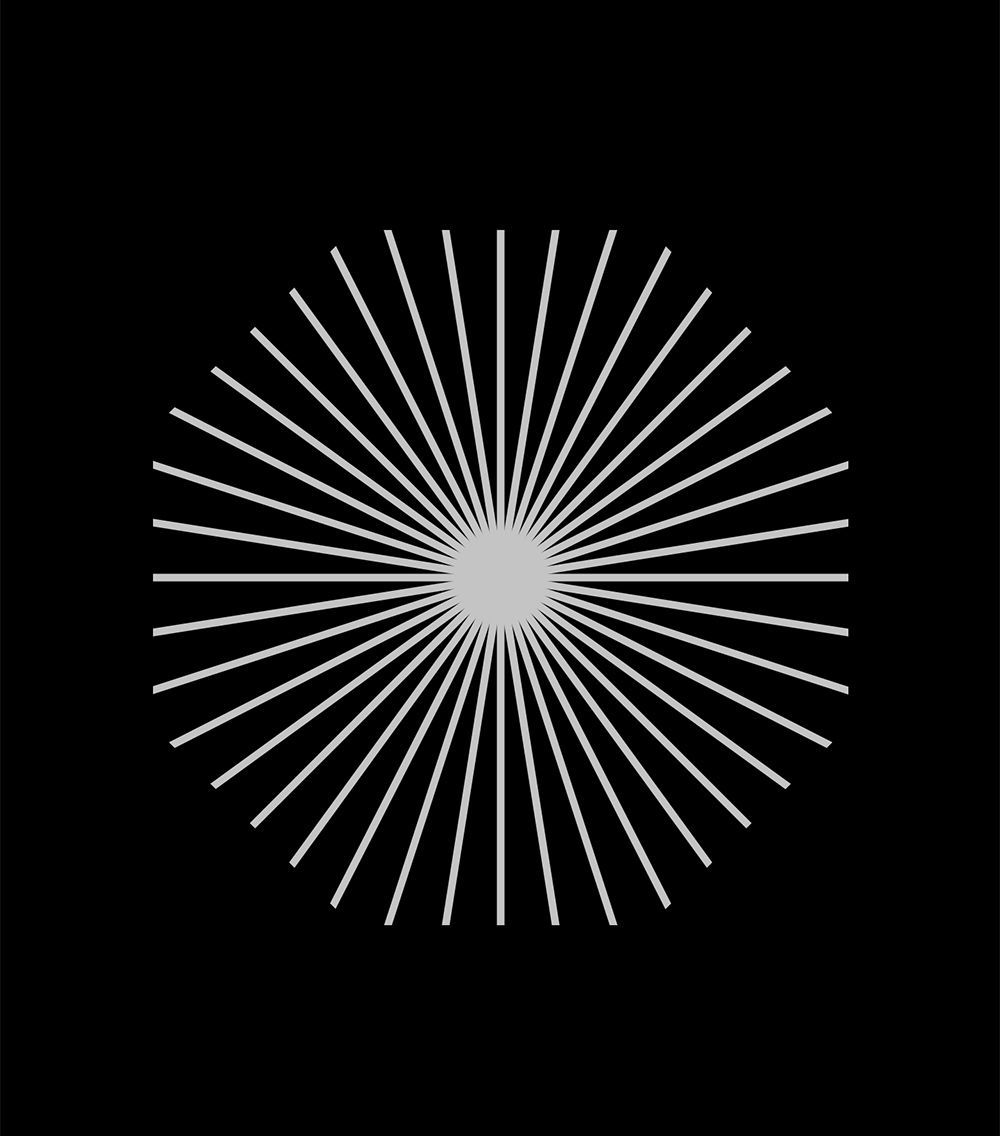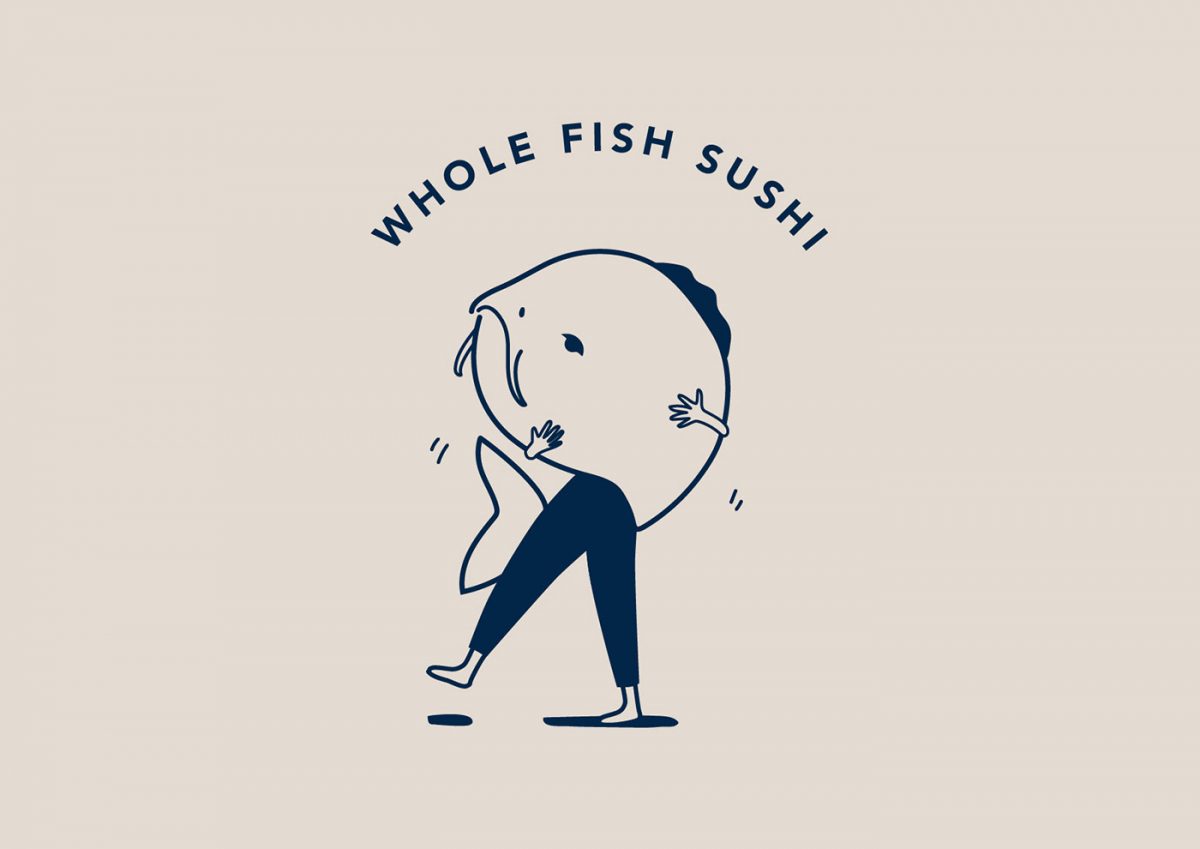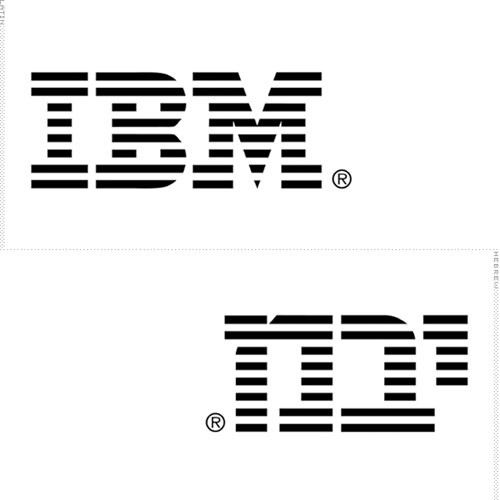Computer logos don’t need to show computers, dentist logos don’t need to show teeth, and furniture store logos don’t need to show furniture.
Just because it’s relevant, doesn’t mean you can’t do better using a design that doesn’t depict the product or service your client provides.
—
Excerpted from the Logo Design Love book.





Comments
True, a logo doesn’t need to say “what we do” but it’s crucial that it says “who we are.”
As well a:
– a logo does not need to read the name of the company
– a logo does not need to include other graphic elements than a font
Probably the hardest part in creating a logo is to stick to one feature of the company identity without adding unnecessary graphic elements.
Totally agree. A logo is just an identifying mark that people associate with your brand.
It’s primary function is to say ‘Here I am, remember me’, it may also, with the help of all the elements of the brand, make you feel a certain way. It isn’t there to say ‘I sell books’, or ‘I’m a car’ or ‘I’m ketchup’.
Fully agree!
Some interesting points, but making a point of featuring the subject seems to me as pointless an excersice as making a point of not including it though. If don’t think there’s one underlying rule here, not that you’ve said there is.
For many situations featuring teeth might actually be suitable for a dentist, but because it’s a dentist doesn’t mean you should automatically exclude teeth from their iD.
Why does Apple need to be depicted by an apple? It could have easily been a microchip, but we’ve just grown so used to what Apple represents that we’ve accpeted the ‘apple’ as the brand.
Brands are obviously more than just a logo, but there’s no harm in the ‘Ronseal method’ either…
When the logo tells the unique and right story of a company and when the logo does this in best way – it’s perfect.
Absolutely, James. The visuals should be appropriate.
oriane_j, a wordmark can be all you need (along with the other brand elements or marks that Lee mentions). For a symbol in isolation brand equity definitely helps.
Mat, for me the most literal translation is often what’s proposed by the client. If we didn’t experiment with more abstract (yet still relevant) ideas, all dentist logos would show teeth.
Ronseal is an example relevant to oriane_j’s comment. The logo is a wordmark (not a paintbrush or tin). That’s not to say the most obvious solution won’t be the best. But rather, we should push ourselves and exhaust every direction before making that choice.
I think the point I was trying to make was that I agree a logo doesn’t need to feature an image of what the company does: dentist = teeth, carpenter = hammer. However, if the best solution (arrived at after research and experimentation) features an image of what the company does, it’s certainly not a bad thing. Some of the best examples of this feature here – http://www.logodesignlove.com/five-personal-favourites
I completely agree that exhausting all avenues before getting to the finished article is essential. Regardless of the end result.
Totally agree with Lee on this.
Spot on. Sometimes I think it shows a lack of sophistication and a lack of awareness of how to build a brand outside of using a logomark. Of course if you come up with a great visual metaphor, have at it, but I always try to present at least one logo concept to a client that is strictly type. I always tell people that the biggest brands in the world generally are type-only compositions, especially when you are talking about luxury or giant brands.
Any design that feels the need to scream something displays an obvious insecurity. Don’t be too desperate for attention. Instead, demand it.
Derek – surely the self imposed rule of presenting one typographic option to the client is putting restrictions on the brief before you’ve started? I’m certainly not suggesting every logo needs a supporting marque or icon of some sort but why stipulate that it doesn’t?
Oh I don’t restrict anything. I just include that route when I am concepting. If an execution doesn’t fit the bill, sayonara. I only present options that fit the brief and are executions that work. The only rule I really have is to prioritize the client’s needs over my own instinctive desire to express myself creatively. Thanks for the response, Mat.
There is no perfect logo. Especially for all stages of the companies life cycle. It’s the same like the is no perfect name.
Yesterday night I have heard an interesting comparison from Angus Hyland at the Design Museum: “A good logo is like a bucket that doesn’t leak”
The logo–bucket carries what is called brand equity
The whole ‘logo-meaning issue’ was one we and the rest of the students back at uni were constantly debating with one of our tutors.
He stating the opposite to this; that a logo HAD to state the business it was representing; no ifs, no buts. Needless to say he was wrong on the issue…
Like it, Luca.
Andrew, your tutor story gave the prompt to drop this previous post link: What graphic design schools are lacking.
Amen.
As long as your client has an advertising budget the size of Apple’s (and decades of awareness-building), or they are the world’s best and most recognizable golfer, you’ll be fine with a logo that doesn’t say what the client does.
Spot on, and beautifully succinct. Thanks, David.
Totally agree!!!
The term ‘Ronseal Method’ actually derives from Ronseal’s tagline “Does exactly what it says on the tin” meaning a business “does exactly what it says on the ‘logo'”.
I think it depends on the business, and the target market. Eg ‘We Buy Any Car.com couldn’t be any more literal in their logo but it obviously works very well for them.
I completely agree about limiting any references in the logo though. I was taught to only use one creative trick in a logo rather than trying to cram in as many references as possible. Simple Logotypes/wordmarks are great, but it’s always better for me if there’s a subtle hint at the essence of the business. Even better if that hint is cleverly hidden within the typography. That’s why the FedEx logo works so well.
I love it when you read a logo, then see the hidden metaphor. It sparks a ‘smile in the mind’ as you appreciate the creativity, and attaches a positive association with the brand making it more memorable.
The Apple logo is curvy and chunky and tactile and cool. The Nike logo is dynamic and fast and swooshy. The logo may not picture the product, but it does evoke the feel of the product.
The Apple logo could not be a microchip because microchips are square, complex and hard to understand.
It is possible to take a literal visual element but use it in a lateral way. There is a good example of a dentist logo showing teeth that was designed by Mind Design.
http://minddesign.co.uk/show.php?id=287&pos=6&cat=2
This identity—inspired by the raking patterns in Zen gardens, which represent protective layers of tooth enamel—uses a tooth as it central motif. The identity abstracts the image of a tooth, and moves it away from a standard literal representation. It also introduces a 2nd element to the design (the Zen rings) which is combined with the tooth.
Having said that, you only have to Google ‘dentist logo’ to see that there are 100’s of logos which use the tooth icon in a literal way. The point I’m making is that it’s not necessarily the use of literal elements that leads to bland and familiar logos, more the use of a literal element in a literal or obvious way.
Nobody was suggesting that Apple put a microchip in their logo. The logo they have now could have been a shoe or a tree or pretty much anything after pouring a zillion dollars into establishing it over 35 years. The original logo at http://en.wikipedia.org/wiki/File:Apple_first_logo.png was created as part of the over-wrought hippie aesthetic of the time (I was there) and was quickly replaced, thank god.
Great point, Mark. Mat Dolphin previously highlighted a few of my favourite logos in isolation. There are two in particular relevant to your point, those for Martin Newcombe Property Maintenance and the Guild of Food Writers. One shows a spanner, the other the tip of a fountain pen — literal objects, but shown in exactly the way you mention, with lateral thinking applied.
Love the comments and dialogues, many of you have good points and interesting perspective. In my opinion, logo design/brand identity is an art, but when we try to lay down a hard a rule ( logos should be this or great logos have that) we inadvertently try to make it a science. Things of love and passion will always remain fluid and subjective. Just a thought as we exchange perspectives.
There are sooooo many dentist logos with teeth or a toothbrush in the image. It’s almost unsettling.
However, most dentist offices are one-off ventures. Because of that, it can be useful to have something so obvious for the sake of immediate recognition and understanding that it’s a dentist’s office. Spreading brand recognition for that would almost seem frugal as your customer base would primarily be limited to your own community/city.
Anyone else know about the conspiracy behind the Apple logo, involving Alan Turing? I found it interesting…
http://www.greggore.com/dln021203.htm
A logo does not need to say what a Company does. I agree, but quite a few classic examples do say WHO they are. I have always felt if you can have both done in a professional way then it’s even stronger and more memorable.
The critical factor is the application. Obviously, any logo appearing on the product it represents need not bear a resemblance to the product.
Microchip logo on a computer? Redundant. Four-wheeled automobile logo riveted to the grille of a car? Redundant. Shoe-shaped logo on a shoe? Redundant.
“Why does Apple need to be depicted by an apple?”
If a company name is descriptive of an object (especially a simple one) you’d be foolish not to include that into the logo. Yes it may be obvious and unimaginative, but there is no clearer way to marry a company name with a visual mark.
…and that is why the Apple logo is an Apple.
The problem is, that most clients will come up with the argument, that companies like Apple are so well known, they just don’t need to explain themselves. And if you think of the first Apple Logo it clearly says ‘apple computer’ although you see newton instead of some computer gear, but you should actually get the idea that this company may have something to do with computers. So the problem I have is how to explain some client from a not that well known company why he shouldn’t stick to creating a far too descriptive Logo.
In those cases I end up looking for a way to reduce this descriptive part to an absolute minimum, trying to combine it with a little soul. And here we are again, functional VS emotional design and how hard it actually is to convince customers from the latter.
The Apple logo does have a byte in it…
@jon: now that never crossed my mind, very nice detail :)
I fully agree! Wish the clients would agree as well.
You also have to take in to account poorer countrys or regions with a high iliteracy level. In these cases, I believe the best way is to include an icon of what the company does, to help the consumer understand what it is that they do.
But, sure, how can you add a computer to a logo having in mind that computers are quickly evolving; just take the regular PC and compare it to a Mac. They differ a lot, and even if you compare a 1985 Mac to a new one, the changes are significative.
So, yeah, it’s a complicated subject. Although David doesn’t talk about iliteracy in his book (maybe it’s because he hasn’t had any direct contact with a company that required this?), he also doesn’t go as far as saying that logos “shouldn’t include any kind of image related to the product”. Props to that.
The book, by the way, is awesome.
Totally agree!
A logo doesn’t need to say “We sell cars” but when people know what the company is, a logo plays an important role, to say that “We sell great cars”.
Great post!
surely the apple logo is an ‘educational’ metaphor – A for apple / apple for the teacher from school days – educational, elementary, and also… keep it simple, universal, age-old, harvest etc etc…there are many metaphorical links … or am I overthinking it and they just chose a random fruit to represent a computer company just to be quirky?
I actually it does help if It’s a small business. When your a giant everyone recognizes you anyway, but when your a small business anything that will help customers correlate your logo to your service helps.
I think there has to be a distinction made here between big corporate business vs smaller specialised services. The latter relying heavily on iconography that will quickly represent their service or specialty vs a large company that can rest on reputation and name alone. A big furniture store may be successful without showing furniture in it’s logo (IKEA), but the guy down the road that restores old furniture would find using such an icon/symbol/form that is synonymous with his business very useful, likewise customers looking for him.
Having said that, if he could call his service Apple Furniture Repairs and then Apple will slap a lawsuit on him and he’d have to close shop…
@Brendan.
Smaller specialized services will continue to invest in low-cost designs which shall result in service-specific-icons. But there are businesses that have invested an extra buck (or have they really? Like 35$ for the swoosh) on a good designer over the years, got themselves a good brandmark, built on them through innovative ‘marketing’, and haven’t changed the logo yet.
I don’t agree when clients or designers work towards service-specific-icons. Tweaking the title of Paul Arden’s book, “It’s not just who you are now, It’s who you want to be”.
I’m a bit of a culprit for this, in some ways I wish I would be less literal in my design work sometimes.
BUT, I have to say, it’s fine for a large corporation with plenty of money available for brand exposure campaigns to be non-literal.
For the small business owner however (my clients), being completely obscure with their brand image might cost them sales.
Anyone else design for sme’s like I do?
Reading to all these comments I have to agree that there’s a big difference between a work for a big company like Pepsi and to smaller ones. It is really difficult to a small company that won’t have all of these ways to express itself do a work with no symbols that communicates what it does. Its brand is all they have.
But if it’s a big company we can follow an example like Starbucks did, they do not tell you that they are a cafe. But as they are a large company and have this image associated in all his products all over the world, we ‘learn’ that a siren represents a coffee shop.
I believe it is important to make a distinction between a logo that represents a company versus a logo that represents a brand.
Logos that represent brands (what I’ll call “brandmarks”) tend to illustrate the brand positioning – most often it might show who they are (to mike erickson’s point above), but might also show what/why/how/etc. And this might actually be a literal representation of what the brand does, if it supports the brand positioning. The Apple logo previously mentioned is a perfect example of a “brandmark”: the bite out of “the forbidden fruit” and the original colored stripes came from a direct challenge against IBM and their positioning as a challenger brand; the same positioning that led to “think different” etc.
On the other hand, companies that have not gone through the branding process don’t have brand positioning to inform the logo design. They tend to be smaller companies that can’t afford (or don’t have access to experienced marketing advice) to go through the branding process, but are not always small companies. Anyway, they end up gravitating to whatever aspect of the business is most notable, which typically is “what we do.” They end up with either a literal representation of what the company does, or how it does it, or a well recognized feature of their products/place of business/ownership, etc.
Interestingly on a side note, using brand positioning as a basis for identity design is a relatively new phenomenon, and what I refer to as “brandmarks” shouldn’t be considered any better or worse than “logos”. In fact, the great classic identity systems pre-1980s/90’s all would fall in the second “logo” category – when it was “corporate identity,” before “branding” came along.
I absolutely agree.
If all logos directly depicted a company’s industry, then all the logos in all the industries would look too similar even though the designers strive hard to make their logo look different.
The sad part is that this is exactly the first concept that most clients love to see.